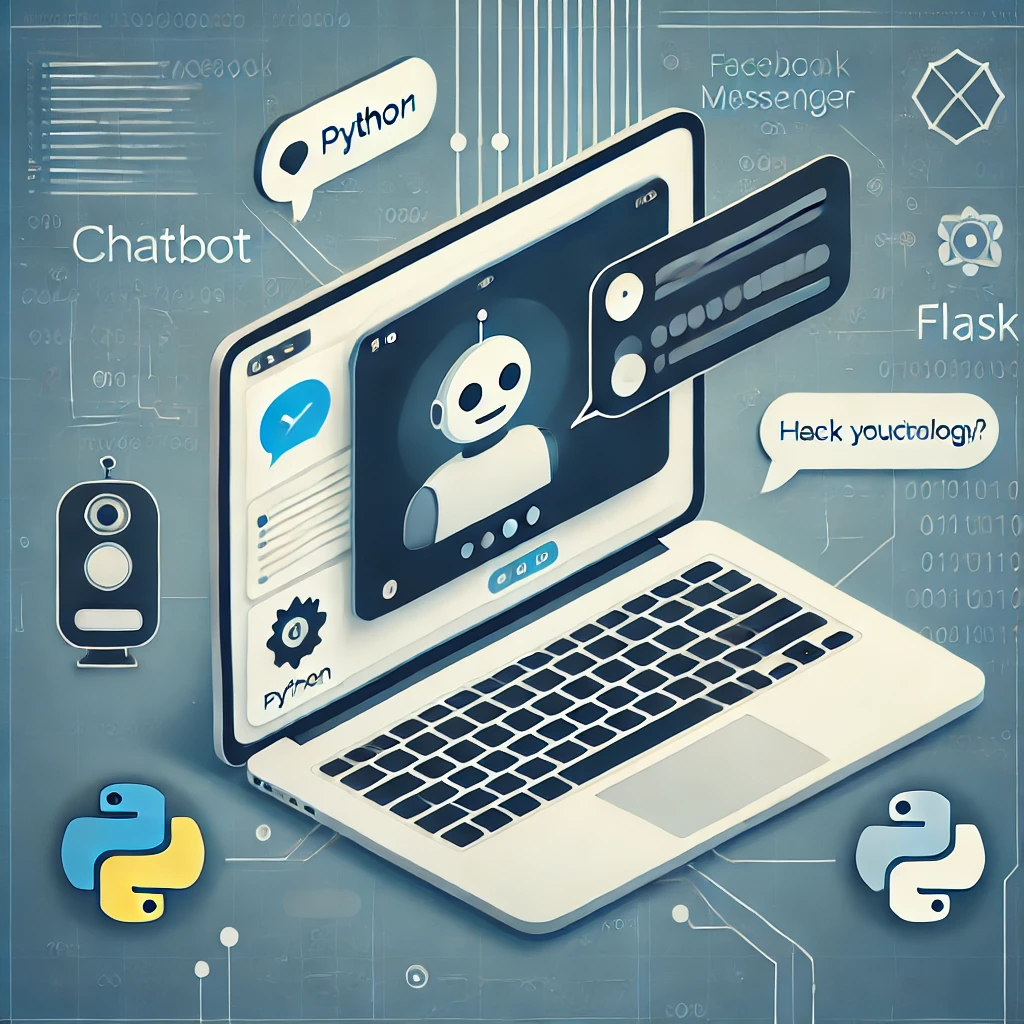Introduction
A Facebook chatbot can automate interactions with users, providing instant responses and improving engagement. This tutorial will guide you through building a Facebook Messenger chatbot using Python and Flask.
Requirements
- Basic knowledge of Python and Flask
- A Facebook Developer account
- Access to the Facebook Graph API
- Python libraries: Flask, Requests
- A text editor (e.g., VSCode, PyCharm)
Step 1: Setting Up Facebook API Access
- Create a Facebook Developer Account: Go to the Facebook for Developers site and create an account.
- Create an App: In your developer dashboard, create a new app and set up a Facebook Page for your bot.
- Generate Access Tokens: Obtain the necessary Page Access Token and verify your webhook.
Step 2: Installing Required Python Libraries
Install the necessary Python libraries using pip:
pip install flask requestsStep 3: Writing the Python Script
Import Libraries: Create a Python script named app.py and start by importing the necessary libraries:
from flask import Flask, request
import requests
app = Flask(__name__)
PAGE_ACCESS_TOKEN = 'YOUR_PAGE_ACCESS_TOKEN'
VERIFY_TOKEN = 'YOUR_VERIFY_TOKEN'Set Up Webhook Verification:
@app.route('/webhook', methods=['GET'])
def verify_webhook():
if request.args.get('hub.mode') == 'subscribe' and request.args.get('hub.verify_token') == VERIFY_TOKEN:
return request.args.get('hub.challenge')
return 'Verification token mismatch', 403Handling Incoming Messages:
@app.route('/webhook', methods=['POST'])
def handle_messages():
data = request.get_json()
for entry in data['entry']:
for message in entry['messaging']:
if 'message' in message:
sender_id = message['sender']['id']
message_text = message['message']['text']
send_message(sender_id, message_text)
return 'EVENT_RECEIVED', 200
def send_message(recipient_id, message_text):
url = 'https://graph.facebook.com/v12.0/me/messages'
params = {'access_token': PAGE_ACCESS_TOKEN}
headers = {'Content-Type': 'application/json'}
data = {
'recipient': {'id': recipient_id},
'message': {'text': message_text}
}
requests.post(url, params=params, headers=headers, json=data)Running the Flask App:
if __name__ == '__main__':
app.run(debug=True)Replace 'YOUR_PAGE_ACCESS_TOKEN' and 'YOUR_VERIFY_TOKEN' with your actual tokens.
Step 4: Deploying the Chatbot
Expose Your Local Server: Use Ngrok to expose your local server to the internet:
ngrok http 5000Set Up Webhook URL: Configure your webhook URL in the Facebook Developer portal using the Ngrok URL.
Test Your Bot: Send messages to your Facebook Page and verify that the bot responds correctly.
Conclusion
Building a Facebook chatbot with Python and Flask can enhance your engagement by providing automated responses to user messages. This tutorial provided a step-by-step guide to setting up and deploying your chatbot.
